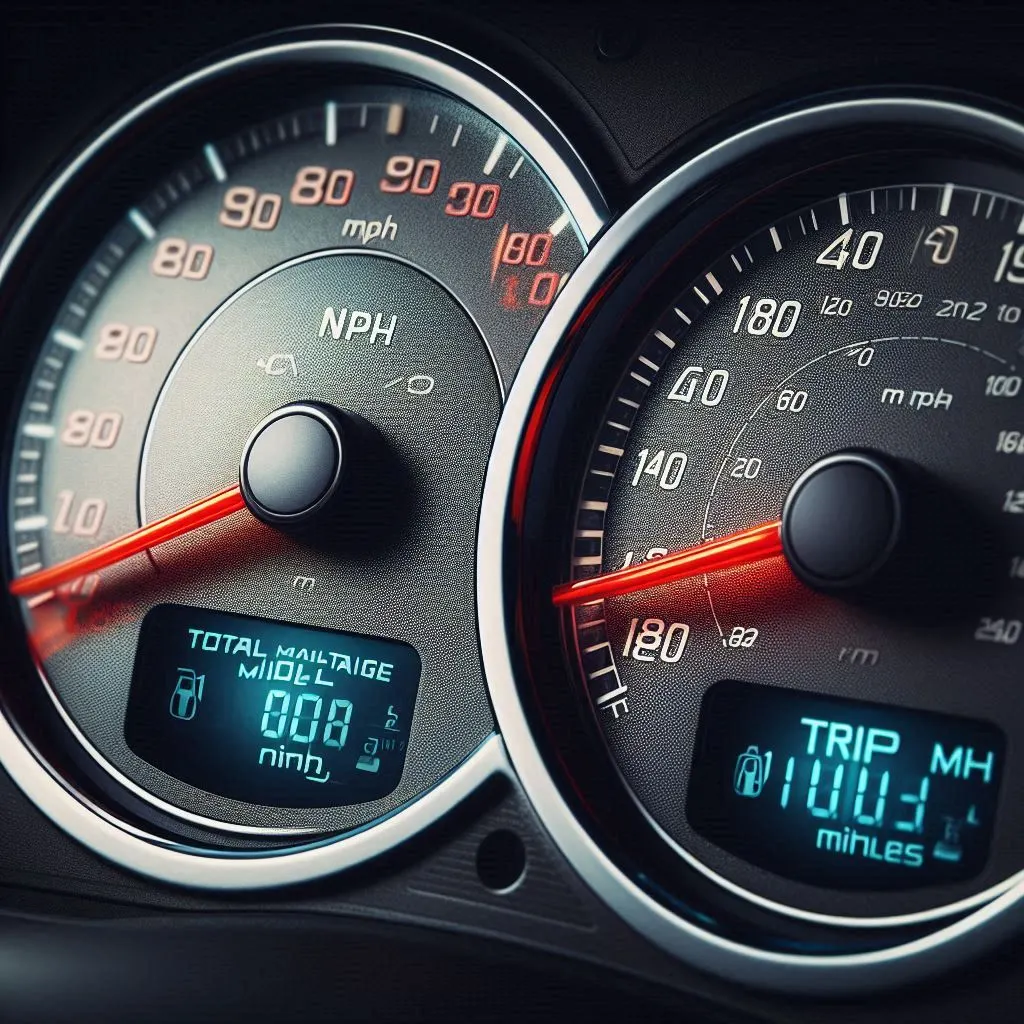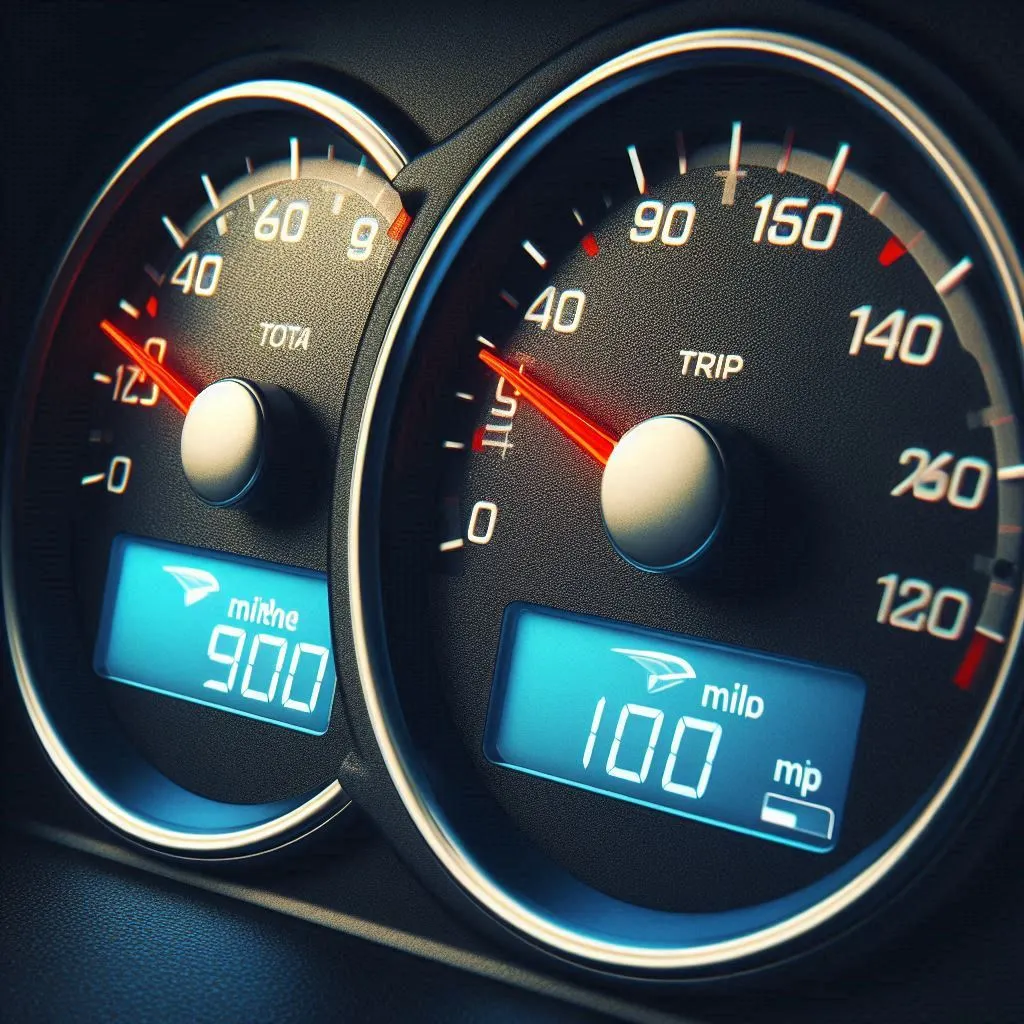An odometer is a critical instrument in modern vehicles, providing essential information about the distance a vehicle has traveled. Whether you are a car enthusiast, a prospective buyer, or just curious about vehicle maintenance, understanding how an odometer works and its uses can be valuable. This article will explore the different types of odometers, how they function, and their significance in vehicle management.
1. Understanding the Odometer
An odometer is a device used to measure the distance traveled by a vehicle. It is typically found on the dashboard of cars, motorcycles, and other motorized vehicles. The odometer displays the total mileage covered by the vehicle since its manufacture or last reset.
There are two main types of odometers: mechanical and digital. Both serve the same purpose but differ in their methods of operation and display.
1.1 Mechanical Odometers
Mechanical odometers use a series of gears and rotating drums to display mileage. As the vehicle’s wheels turn, they drive a set of gears connected to the odometer. The rotation of these gears causes the numbered drums to rotate, changing the displayed mileage. Mechanical odometers are typically found in older vehicles and can be less accurate due to mechanical wear over time.
1.2 Digital Odometers
Digital odometers use electronic sensors and digital displays to show mileage. These systems rely on electronic circuits to measure and record the distance traveled. Digital odometers are more common in modern vehicles due to their accuracy and ease of use. They often come with additional features, such as trip meters and fuel economy readings.
2. How an Odometer Works
To understand how an odometer works, it’s important to grasp the basic principle behind its operation. Regardless of the type, an odometer is designed to count the number of rotations of the vehicle’s wheels or drive shaft. This count is then translated into distance traveled.
2.1 Mechanical Odometer Operation
In a mechanical odometer, the movement of the vehicle’s wheels is transmitted to the odometer via a flexible drive shaft. This shaft is connected to a set of gears inside the odometer. Each gear is calibrated to rotate a specific number of times for every unit of distance traveled. As the vehicle moves, these gears rotate, causing the numbered drums on the odometer to turn and display the mileage.
Mechanical odometers are prone to inaccuracies over time due to mechanical wear. Additionally, they can be susceptible to tampering, as adjusting the mileage requires physical intervention.
2.2 Digital Odometer Operation
Digital odometers use electronic sensors to detect wheel rotations. These sensors send data to an onboard computer, which calculates the distance traveled based on the number of rotations. The distance is then displayed on a digital screen.
Digital odometers are more accurate than their mechanical counterparts because they are less affected by physical wear and tear. They also offer features such as trip meters, which allow drivers to track distance for specific journeys.

3. Uses of an Odometer
The odometer plays a crucial role in various aspects of vehicle management, including:
3.1 Vehicle Maintenance
Regular maintenance is essential to keep a vehicle in good condition. The odometer helps drivers keep track of when maintenance tasks, such as oil changes, tire rotations, and brake inspections, are due. Many maintenance schedules are based on mileage, so having an accurate odometer reading is vital for timely servicing.
3.2 Vehicle Valuation
When buying or selling a used vehicle, the odometer reading is a key factor in determining its value. A vehicle with a low mileage is generally considered to be in better condition and may command a higher price. Conversely, a high-mileage vehicle may be valued lower due to the increased likelihood of wear and tear.
3.3 Fuel Efficiency
The odometer helps drivers monitor their fuel efficiency by tracking the distance traveled and comparing it to fuel consumption. By keeping track of mileage and fuel usage, drivers can assess their vehicle’s performance and make adjustments to improve fuel efficiency.
3.4 Legal and Insurance Matters
In many jurisdictions, accurate odometer readings are required for legal and insurance purposes. For instance, when registering a vehicle or filing an insurance claim, the odometer reading may be used to verify the vehicle’s mileage and ensure compliance with legal requirements.
4. Common Issues with Odometers
While odometers are generally reliable, they can experience certain issues that affect their accuracy or functionality. Some common problems include:
4.1 Odometer Fraud
Odometer fraud involves the illegal practice of rolling back or tampering with an odometer to reduce the displayed mileage. This is often done to increase the vehicle’s resale value. To combat this issue, many countries have implemented regulations requiring sellers to provide accurate odometer readings and maintain records of mileage.
4.2 Mechanical Wear
Mechanical odometers can suffer from wear and tear over time. Gears may become worn, leading to inaccuracies in the displayed mileage. Regular maintenance and inspection can help mitigate these issues and ensure the odometer remains accurate.
4.3 Electronic Failures
Digital odometers, while generally more accurate, can experience electronic failures. These failures may result in incorrect mileage readings or malfunctioning displays. Regular checks and servicing can help address and prevent such issues.
5. Tips for Maintaining Odometer Accuracy
To ensure your odometer remains accurate and reliable, consider the following tips:
- Regular Maintenance: Keep your vehicle well-maintained to prevent mechanical issues that could affect the odometer. Regular servicing and inspections can help catch potential problems early.
- Verify Odometer Readings: When buying or selling a vehicle, verify the odometer reading with service records and other documentation to ensure accuracy.
- Be Aware of Tampering: Be cautious of signs of odometer tampering, such as inconsistent mileage or discrepancies between the odometer reading and service records.
- Keep Records: Maintain detailed records of your vehicle’s mileage and maintenance history. This information can be valuable for tracking performance and addressing any issues that arise.
6. Conclusion
An odometer is a fundamental component of modern vehicles, providing essential information about the distance traveled. Whether mechanical or digital, odometers play a crucial role in vehicle maintenance, valuation, and overall management. Understanding how an odometer works and its uses can help vehicle owners make informed decisions and ensure their vehicles remain in good condition. By being aware of potential issues and maintaining accurate records, drivers can maximize the benefits of this important instrument.
